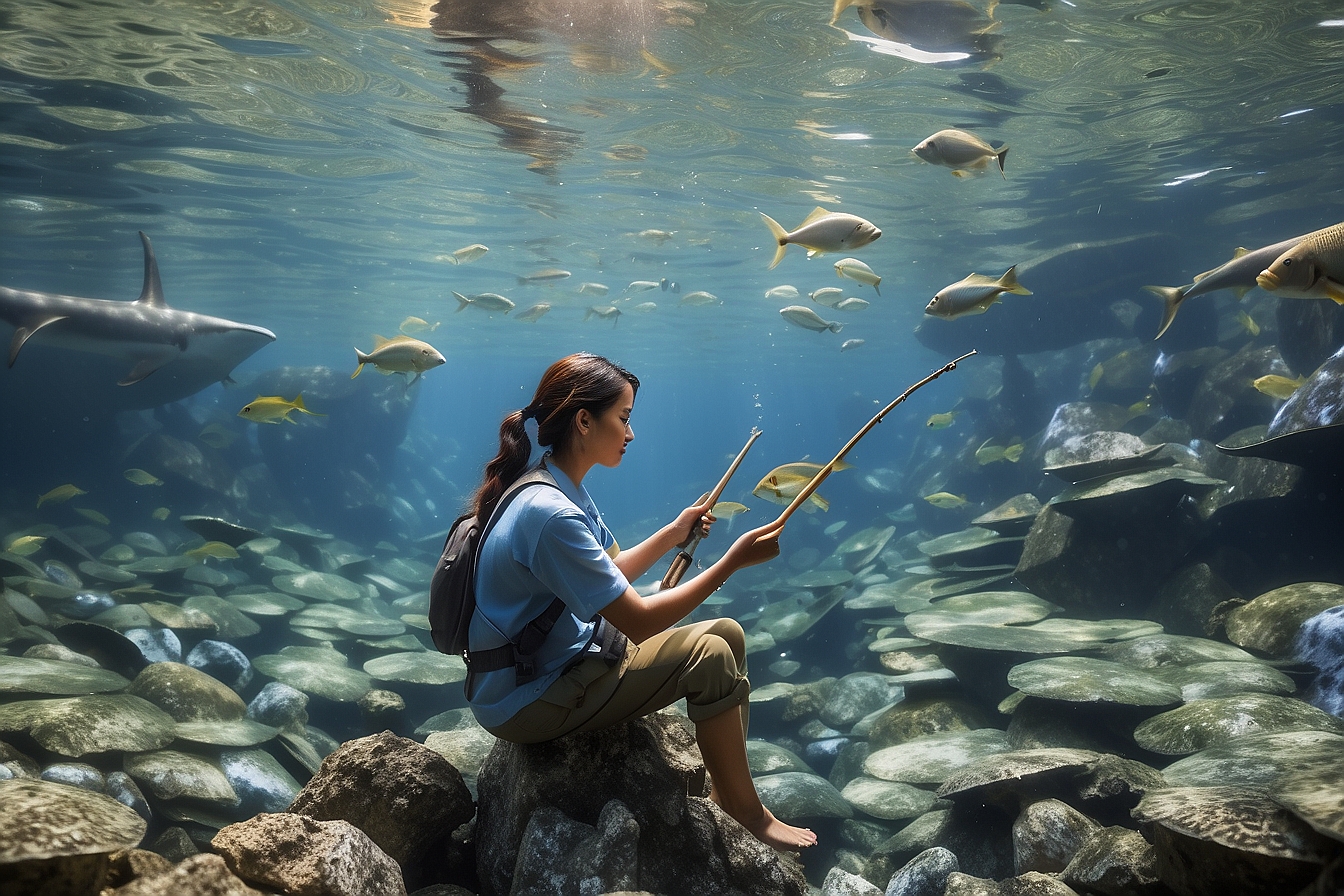In 1992, Hurricane Andrew swept across southern Florida. The winds, reaching speeds up to 177 mph, ruptured a posh beachside aquarium in Biscayne Bay, Florida to release just a few ornamental lionfish.1 It’s a dramatic beginning to one of the worst biodiversity by up to 80%.2 With no natural predators, the lionfish have spread widely and grown in numbers. They threaten biodiversity, dive operations, and local fisheries because native fish do not yet know how to eat them, on account of their venomous spines. Humans must intervene now if there is any hope of saving local fish populations from extinction.
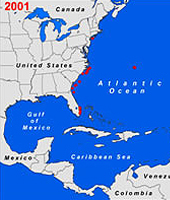
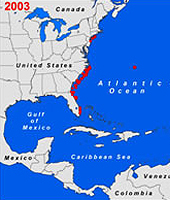
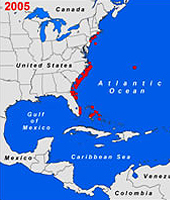
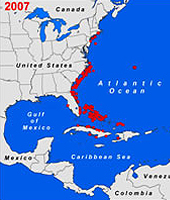
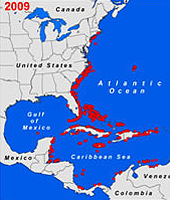
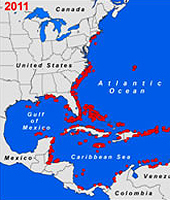
Lionfish population growth from 2001 through 2011 (shown in red).3
The Perfect Predator
There are several reasons why the lionfish has been able to become such a destructive force in the Atlantic:
- Due to their venomous spines, the lionfish have very few natural predators in the Pacific and they have no predators in the Atlantic Ocean and Caribbean Sea regions.
- Lionfish have big appetites. They are known to eat at least 50 different fish in the region. In one case, a research team observed just one lionfish eating 20 small fish in less than 30 minutes!4
- Lionfish can reproduce rapidly. In just one year a single female spawns more than 2 million eggs.
- Perhaps most importantly, lionfish can live in a variety of different coastal habitats. The fish can be found in both coral reefs and mangroves, close to shore and 300 meters out to sea.5
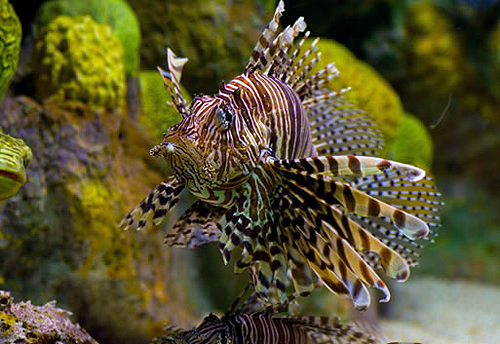 6
6
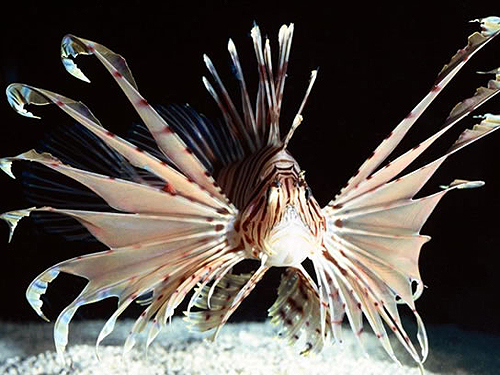 7
7
The lionfish invasion strikes at one of the worst times in the Caribbean. More than 75 percent of the coral reefs are already in endangered due to carp in the Great Lakes), Mark Hixon, an Oregon State University marine ecologist told reporters, “we’ve not seen such a large predatory invasion in the ocean before.”8
Dealing with the Disaster
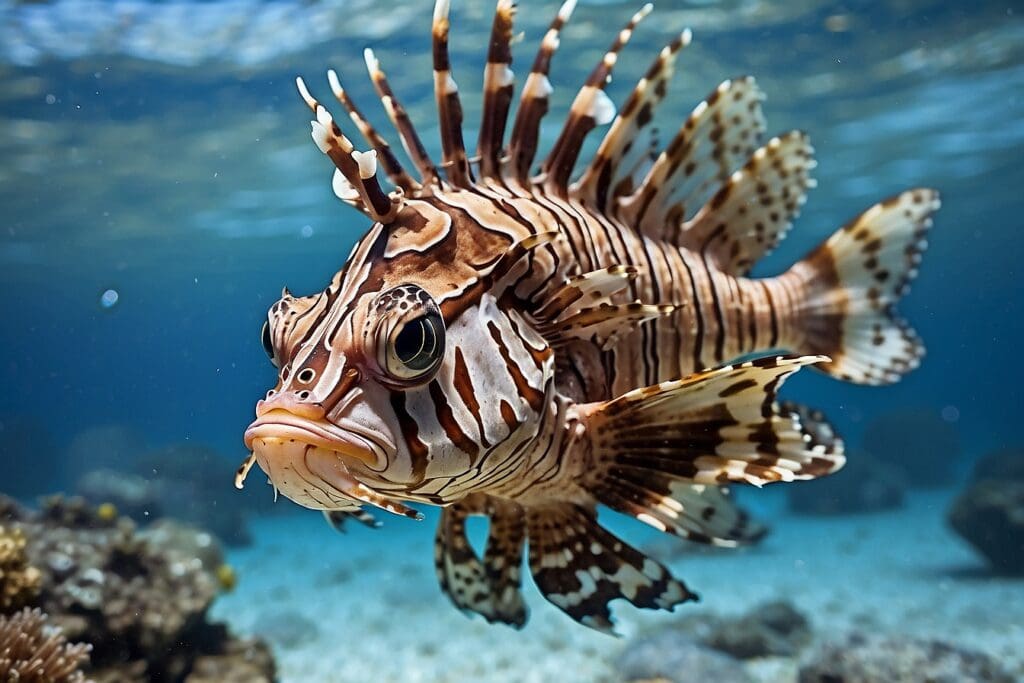
Governments across the Caribbean are instituting lionfish management plans, hoping these plans will curb the impacts of lionfish on other fisheries.
- Certain countries, like the United States and Jamaica are encouraging people to catch and eat lionfish. Due to the lionfish’s poisonous spines, governments have to teach fishermen how to safely catch, handle, clean and prepare these fish.
- For example, the Dutch Antillean Islands imported mini-harpoons called “ELF (Eliminate Lion Fish) Devices” specifically designed in the U.S. to allow divers to catch lionfish from farther away.9
- The private sector is getting involved as well. Lionfish cookbooks are becoming popular10, and in some high-class restaurants, a lionfish dish sells for upwards of $30!11
- As Jackson Landers, a Locavore Hunter, based in Virginia, puts it in his book Eating Aliens, “when human beings decide that something tastes good, we can take them down pretty quickly.”12 The increasing popularity of derby-style events where divers remove large numbers of lionfish from protected areas seems to be proving him correct.13
- Governments are also continuing to monitor lionfish populations and population growth patterns, as well as sponsoring research to find possible lionfish predator species, such as grouper.14
- Efforts are also underway to coordinate a region-wide response to the invasion, including sharing of “best lionfish management practices” among coral reef managers, collaboration between national governments, and partnerships with the fishing and tourism industries, civil society and research institutions.15
As the lionfish situation continues to unfold, it will be a good lesson in the importance of preventing invasions beforehand. At this point it will be difficult to contain lionfish populations and prevent them from spreading further. It is critical to detect invasive species early enough to deploy rapid response programs. Even more importantly, people should be well educated about invasive species and their potential impacts. Better education campaigns and pet trade restrictions must be instituted to reduce the risk of any future marine invasions.


